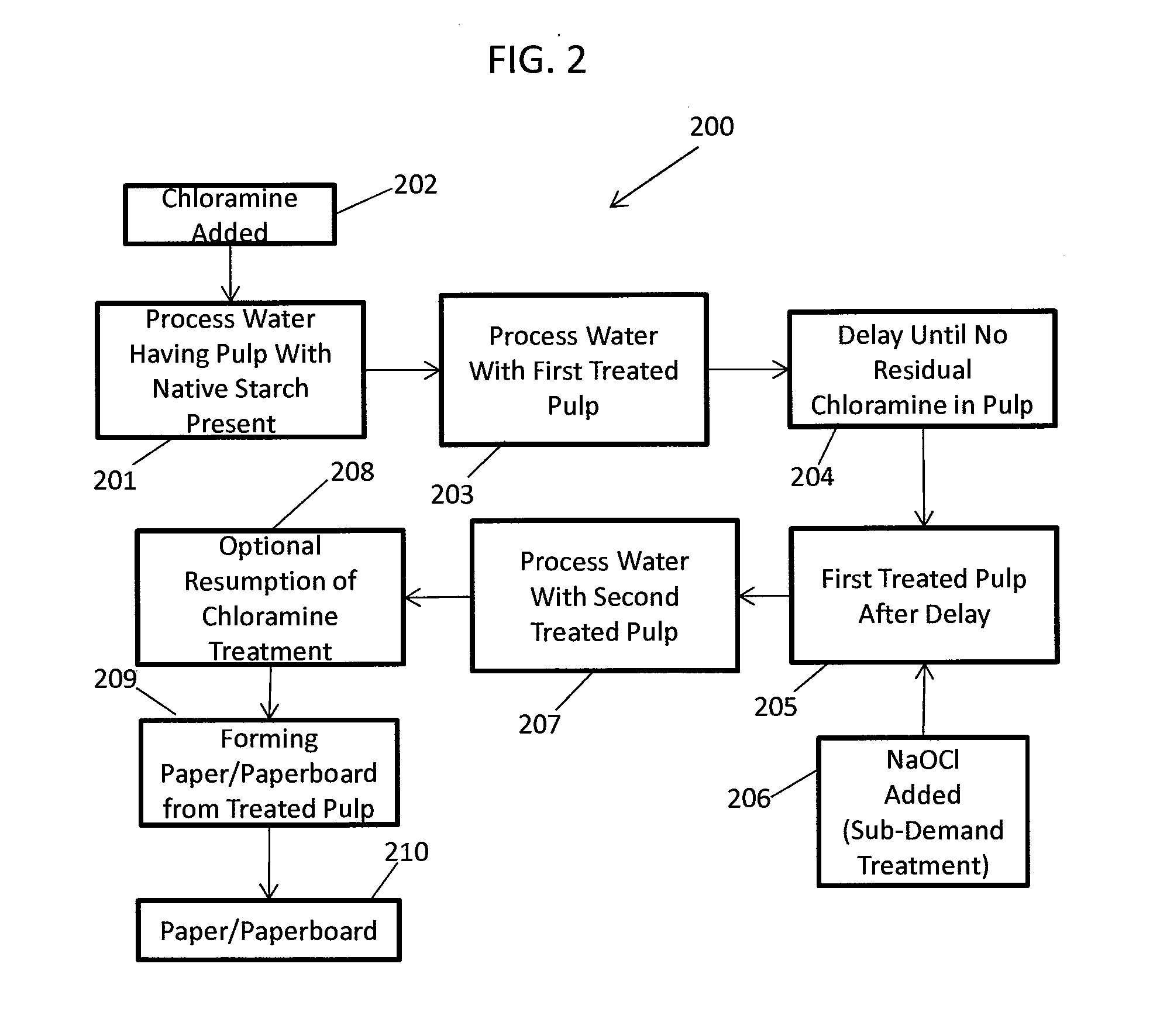Methods Of Preserving Starch In Pulp And Controlling Calcium Precipitation And/Or Scaling
- Summary
- Abstract
- Description
- Claims
- Application Information
AI Technical Summary
Benefits of technology
Problems solved by technology
Method used
Image
Examples
example 1
[0076]This example demonstrates one or more of the superior benefits of the present invention. A new anaerobic digester was being used at an effluent plant that received waste water from papermaking (after pulp removal). Prior to the present invention, the plant reported loss of performance of the anaerobic digester from calcium precipitation and / or scaling and also reported blocking of the digester from precipitation and / or scaling. The plant had to shut down the digester to clean the digester (scale removal) This resulted in significant down time for the plant and unscheduled expenses to clean the digester. The plant operators did not understand the cause of the problem or a solution. The present inventor offered an experimental trial to see if the present invention would work in the field. The process water that became the waste water that entered the digester was treated. In particular, the process water (which contained pulp) was treated with chloroamines (primarily monochloram...
example 2
[0078]This example also demonstrates one or more of the superior benefits of the present invention. An anaerobic digester was being used at different effluent plant that received waste water from papermaking (after pulp removal). Prior to the present invention, the plant reported loss of performance of the anaerobic digester from calcium precipitation and / or scaling and also reported blocking of the digester from precipitation and / or scaling. The plant had to shut down the digester to clean the digester (scale removal). This resulted in significant down time for the plant and unscheduled expenses to clean the digester. The plant operators did not understand the cause of the problem or a solution. The present inventor offered an experimental trial to see if the present invention would work in the field. The process water that became the waste water that entered the digester was treated. In particular, the process water (which contained pulp) was treated with chloroamines (primarily m...
example 3
[0079]Experimental tests were conducted to evaluate the effects of adding NaOCl to high demand solutions containing amylases, including α-amylases.
[0080]In the experiments described below, amylase activity was measured using a synthetic α-amylase substrate, “RED-STARCH” obtained from MEGAZYME® (Ireland), and a test procedure developed that allows the use of this substrate in complex paper mill process waters including samples containing cellulose.
[0081]The indicated test procedure developed for testing paper mill samples for α-amylase activity includes preparation of the substrate by adding 1 g of powdered RED-STARCH substrate to 50 mL of 0.5 M KCl solution (7.45 g / 100 ml), and warming up to 60° C. whilst shaking vigorously until dissolved. The prepared substrate can be used fresh or stored under refrigeration until used. A concentrated assay buffer solution was prepared as a 300 mM CaCl2.2H2O solution (39.2 g / l), which for use, is diluted 200 times in the assay. Assays can be perfo...
PUM
| Property | Measurement | Unit |
|---|---|---|
| Fraction | aaaaa | aaaaa |
| Fraction | aaaaa | aaaaa |
| Fraction | aaaaa | aaaaa |
Abstract
Description
Claims
Application Information
 Login to View More
Login to View More - R&D
- Intellectual Property
- Life Sciences
- Materials
- Tech Scout
- Unparalleled Data Quality
- Higher Quality Content
- 60% Fewer Hallucinations
Browse by: Latest US Patents, China's latest patents, Technical Efficacy Thesaurus, Application Domain, Technology Topic, Popular Technical Reports.
© 2025 PatSnap. All rights reserved.Legal|Privacy policy|Modern Slavery Act Transparency Statement|Sitemap|About US| Contact US: help@patsnap.com


